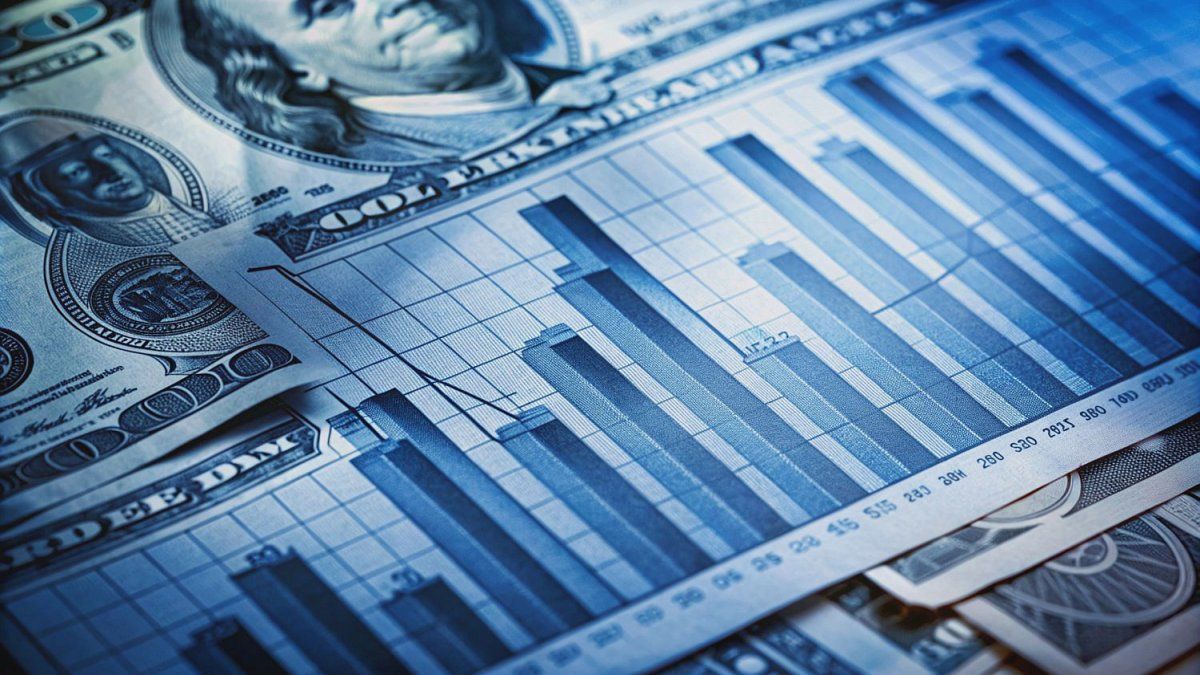. – We do not know, if it continues to devalue at a monthly rate of 2.2% as in January, by the month of March the annualized devaluation rate and inflation rate could be equal. This implies that the government should announce a change of course in monetary and exchange rate policy by April.
Unless you want to delay the exchange rate?
. – It is a possibility, by delaying the exchange rate the government manages to control prices more. This would require external financing, something that is not available today.
Do harvest dollars come in in April?
. – We estimate a corn harvest of 50 million tons, of which 15 million would be first class and are harvested between March and April. If all of this is sold abroad, the product would be US$ 2,925 million, taking an FOB price of US$195 per ton. Of this total, only US$2,340 million would enter the BCRA’s coffers, since 20% is settled abroad in the CCL dollar. The soybean harvest, with great luck, would be 50 million tons, historically half is sold, therefore, the probable income would be US$ 11,250 million, of which US$ 9,000 million would enter the BCRA coffers. since 20% is settled abroad in the CCL dollar.
Second-class corn?
. – It is harvested in July, it would be 35 million tons, you should keep in mind that approximately 18 million tons of corn are consumed in the domestic market, the rest is sold abroad in the rest of the year. In total, with luck, about 32 million tons would be exported.
Isn’t there a super income of dollars?
. – Not at all, the producer will sell what is fair and necessary, international prices are very bad, and the wholesale dollar is considered low, if we add to this the high costs, the producer will delay the sale of the production he harvests.
What is the business problem?
. – Those who produce soybeans have an exchange rate of $616 for exports. This number arises from taking 80% of the value of the wholesale dollar, 20% of the CCL dollar and deducting 33% of the withholdings. On the other hand, his inputs are imported and he pays them at a dollar of $972 (wholesale dollar plus country tax). They are clearly condemning it to bankruptcy. Add to that that 70% of those who work in the fields rent, and the rent is, depending on the areas, between 30% and 40% of the total they produce.
What about corn?
. – Similarly, the one who produces corn exports with one dollar at $809 while he pays for the inputs with one dollar at $972, he rents the field, making corn is much more expensive than soybeans, and on the other hand he has higher marketing expenses per Transfer to port, one hectare of corn yields more than 8 tons depending on the quality of the land and region, and in the case of soybeans more than 3 tons depending on the quality of the land and region.
What is happening in the world?
. – Agricultural raw materials are not a big business, in Europe there are marches demanding subsidies, in Argentina the producer is kidnapped by the State that fleeces them of taxes, and they continue working as the heroes of this country. The countryside contributes between 60% and 70% of the dollars from the export of goods every year. Without farm dollars, many economic sectors could not function. Even oil falls.
Clipboard01.jpg
What is happening in the United States with the soybean and corn business?
. – The American universities declare that the producer would have a loss in corn and soybeans, this is said by the universities of IOWA and Michigan, not by the person writing this note, or by some pseudo-influencer fanatic. It is very important when saying these things to cite the source.
The government is still thinking about raising withholdings
. – You are very wrong, on the other hand, if you want to increase withholdings you will lose your way. Exporters have already advanced the export duties of 18.7 million tons of corn and 6.7 million tons of soybeans, therefore, what they dream of collecting through increased withholdings in 2024 is practically impossible.
Don’t you see a large income of dollars from the harvest?
. – Firstly, I do not see a great harvest, secondly, international prices are low, thirdly, the exchange rate does not enchant the producer, fourthly, the government never understood that it has to give incentives to the producer if He wants them to liquidate what he produces.
When is the agreement with the IMF coming?
. – We don’t know, it would seem that they are working with their sights set on June. Until March the government will have a competitive exchange rate devaluing at 2.0% monthly. After March you will have to look for another monetary and exchange scheme. If you accelerate the devaluation, you will have more inflation, and you should modify the monetary policy rate.
How is the future dollar coming?
. – The February future dollar shows a price difference of 2.8% compared to the wholesale dollar at the end of January. Between the March and February future dollar there is a gap of 6.1%, while between the April and March future dollar the gap rises to 13.6%, in this case with an increase in open interest (positions to mature) in April .
Does the market discount any dollar adjustment in April?
. – It would seem that yes, the markets are talking, if we look at the volume of open positions and the prices, everything would indicate that in April we will have a rise in the wholesale dollar.
If this happens, would the interest rate have to increase?
. – Of course yes, if you increase the exchange rate and leave the interest rate low, exporters will seek financing to delay liquidations. Devaluation and rate increases go hand in hand.
So should I take financing now?
. – Correct, in the future the rates will be much more expensive.
Do I finance myself in dollars or pesos?
. – Not everything is free, we explain it to you in the private report.
What would happen to alternative dollars?
. – The government achieved that the sum of the monetary base and remunerated monetary liabilities versus reserves leaves us with a balance dollar of $1,600. However, we do not see growth in the monetary base, in real terms it has been falling, so there are no pesos to validate large increases in the blue exchange rate. Regarding MEP and CCL dollars, there could be an increase due to the enormous amount of deposits in pesos that the financial system has. However, in both cases economic agents do not want to buy dollars, since the recession invites them to sell to cover their budgets.
Will the Central Bank increase reserves?
. – The Central Bank has a structural problem. The previous government allowed imports without providing the dollars to pay for them. Today we have to pay for imports for the year 2023, and THERE ARE NO DOLLARS, therefore, an increase in reserves does not seem likely until this structural problem is resolved, and economic agents are allowed to import without restrictions.
Is dollarization close?
. – In no way, you would need to increase reserves by at least US$ 20,000 million.
Lifting the stocks is close?
. – Personally, I see it as a long way off, by the year 2025, the legacy left by the previous government is very large, it is not a problem of the current government, it is imitating the problems that were inherited.
How do you see bonds in pesos that adjust for inflation?
. – I think there are 3 very good bonds that adjust for inflation, the first is the DICP which has a return rate of 0.8% per year, pays a written rate of 5.83% per year and begins to pay amortization in June 2024 The second, the TX26, which has a negative rate of return of 6.9% per year, pays a written rate of 2.0% per year and begins to pay amortization in November 2024. The third, the TX28, which has a negative rate of return of 7.6% annually, pays a written rate of 2.25% annually and begins to pay amortization in May 2024.
Any bargains?
. – It is very long-term, but the PARP bond that matures in 2038, trades at a parity of 87% of its technical value, pays you a return rate of 3.8% per year. It is very speculative, it pays semiannual rent of 1.77% annually, and the amortization begins to be paid in September 2029. You have to be very patient to buy it.
Should I buy Bopreal?
. – It is a short bond, today it is worth US$ 71.40, it is the fourth most traded bond in the market. He returns the capital in two installments in the year 2027, and pays US$5.0 in income per year. You invest US$71.40 today and if you hold out until the end you will put US$117.90 in your pocket. If you reinvest the money with each rent and amortization payment, the rate of return is 16.8% per year in dollars.
Should a bonus in dollars or pesos suit me?
. – If the Milei plan succeeds, we will go to a low exchange rate scenario, so bonds in pesos adjusted for inflation are the best option. If the Milei plan fails, dollar bonds are the most appropriate, in fact I would say that the healthiest thing would be to have dollar bills.
Do I support Milei?
. – What do you save on?
In dollars
. – This is how you are supporting the past. Tell me what you save on, and I’ll tell you who you support.
What do you save on?
. – In what makes me earn more money, with inflation in December, and what is coming for January, February and March, it is best to save in pesos adjusted for inflation. If the government delays the exchange rate, the gains in dollars will be enormous.
Is that the best for the country?
. – We are talking about making the best investment, under the parameters set by the government. The best thing for the country is for a coffee chat, which does not move the ammeter of what is happening in the market. Here we talk about investing, we don’t do politics.
Conclusion
. – Be careful, if the government delays the exchange rate we will have inflation in dollars, and that changes the way we do business. We leave that to you for the private report, and tomorrow we will make a preview on this same page.
. – You can see the fund flows of Bopreal bonds, and bonds in pesos adjusted for inflation in our private reports.
Source: Ambito
I am a 24-year-old writer and journalist who has been working in the news industry for the past two years. I write primarily about market news, so if you’re looking for insights into what’s going on in the stock market or economic indicators, you’ve come to the right place. I also dabble in writing articles on lifestyle trends and pop culture news.




